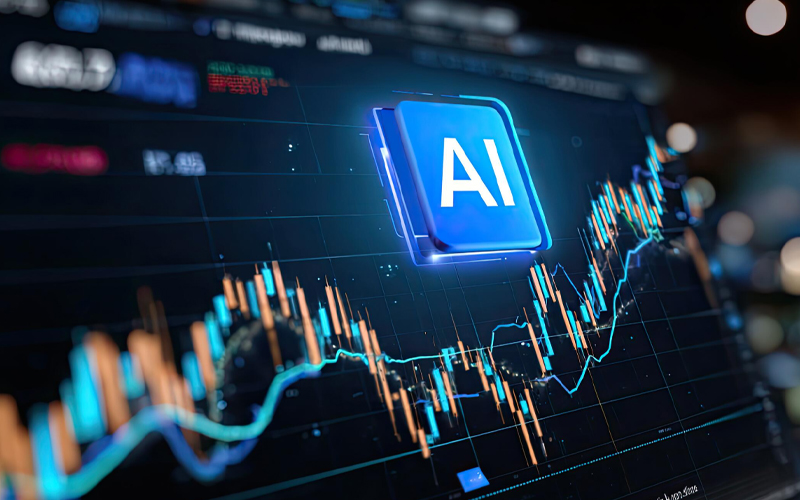Accounts Payable or AP should be an automated process. But is it? The reality is that most companies spend an enormous amount of time and effort in recording purchases and paying their vendors.
With enterprises rapidly moving towards a digitized and streamlined system for managing operations, AP solutions are also simultaneously witnessing a paradigm shift. Thanks to new technology suites, such as the Live Enterprise, businesses today are becoming more agile in making smart decisions with a sentient and adaptive quality of a living organism. All at a reduced cost but with hyper-productivity.
Capitalizing on the emerging trends in Accounts Payable, and augmenting the existing system landscape with new technologies, can substantially improve processes and working capital for an entire organization. In this context, let’s explore the top 6 AP trends that are disrupting the market today.
Want your business to fly? Take it to the Cloud!
Having a Cloud-based, "Over-the-Top" platform, reduces the cost and time compared to setting up a custom AP process on traditional ERP infrastructure. A Cloud-based AP platform seamlessly integrates with underlying systems, allowing companies to receive, process, audit, and approve AP payments from anywhere.
More importantly, a lot of Cloud-native AP platforms, such as the Infosys APOC (Accounts Payable on the Cloud), allows customers to consume the entire AP process as a service, with flexible "pay-as-you-pay" commercial models. These platforms become an enterprise-wide system of engagement for AP processes, without having to rip and replace the existing technology infrastructure. Cloud-based AP systems have enabled accounting and finance teams to work remotely with high efficiency during the pandemic. We will witness more companies migrating to Cloud-based AP platforms in the coming years.
Artificial Intelligence is real: tomorrow is now
IMachine Learning (ML) and Artificial Intelligence (AI) are among the most trending AP automation themes seen in the last couple of years. Historical data has been used effectively to train AI systems to mimic human action and apply it on very large data sets. From spotting duplicate invoices to managing invoice coding, routing invoices for approval, and using smart nudges to clear holds, AI has significantly improved AP cycles in the recent past. There has also been a fundamental shift away from older automation techniques, such as OCR (Optical Character Recognition), and now combines AI to bring in a lot more accuracy in data extraction, while also training the system to self-learn. As AI and data science continues to grow, we are witnessing AP platforms also adopt data mining, analytics, meta-tagging and tracking features to offer an integrated AP stack.
e-Invoicing and networks are back
Paper invoices will continue to reduce as experts have predicted that the e-invoicing industry will grow at a compound annual growth rate (CAGR) of about 20% and reach a market volume of $20.5 billion between 2019 and 2026. This has also been accelerated with government mandates in certain geographies driving higher adoption of e-invoicing solutions, especially in the Business to Government (B2G) segments. We are seeing a revived interest in vendor networks, both in terms of AP networks and holistic procurement platforms that are now extending their focus on downstream electronic invoicing capabilities. Companies are seeing a 30-50% reduction in data entry efforts with a switch to electronic invoices.
Portal-ization and self-service maximization
The pandemic has accelerated the need for anytime-anywhere information and self-service. Several companies have adopted portals as a one-stop gateway for all vendor interactions. Vendor portals today offer integrated intelligent functions, such as PO flips that allows vendors to convert POs to invoice in the fraction of time required to do the same process manually. Additional functionalities, such as master data edits, invoice and payment status, and integrated query management has resulted in a significant reduction in vendor queries and enhanced experience across the board.
In the near past, we have also seen a proliferation in the adoption of intelligent chat interfaces, to improve vendor self-service. Asynchronous chat engines offer a multi-channel interactive solution that can potentially reduce vendor queries by up to 70%. The top 5 intents in AP in 2021 include – PO status, invoice status, payment status, statement requests, and buyer contact information.
We also see that a siloed approach to the helpdesk is being replaced with holistic vendor interaction decks that manage the entire procure-to-pay value stream.
Analytics and proactive AP controls
There is a paradigm shift in the way AP controls are being defined and executed in today's world. A lot of customers are using deep analytics and system techniques, such as compliance mining, to continuously monitor AP data and identify outliers. Everything, from segregation of duties conflicts, to duplicate invoices and payments, change in payment methods to unauthorized amendments, all are tracked continuously using ML algorithms, allowing customers to move to a proactive compliance regime. Many systems use in-built engines to achieve this.
Invoice less
Organizations have consciously focused on reducing the number of invoices that are received and processed daily. Tactical operations include PO consolidation resulting in downstream invoice rationalization, by which, a lot more shipments or services are invoiced together, especially in high transaction industries, such as retail. We also see higher adoption of newer strategic procurement models, including consortium-based buying, resulting in a reduced number of invoices. On the technology side, we see a renewed focus on self-billing and ERS, at least in certain industries and certain geographies.
The Future is bright – "Autonomous AP" next!
There will be foundational shifts in how technology is adopted across finance in general, and AP in particular. We believe that distributed ledger technology, such as blockchain will be a disruptive new integration in the supply chain universe. While initial POVs will replace underlying technologies, true disruption is just around the corner, when cross-company networks combine with the power of AI and smart contracts for a completely autonomous AP. That's a blog for another day...
This article was first published by CFO Dive.







